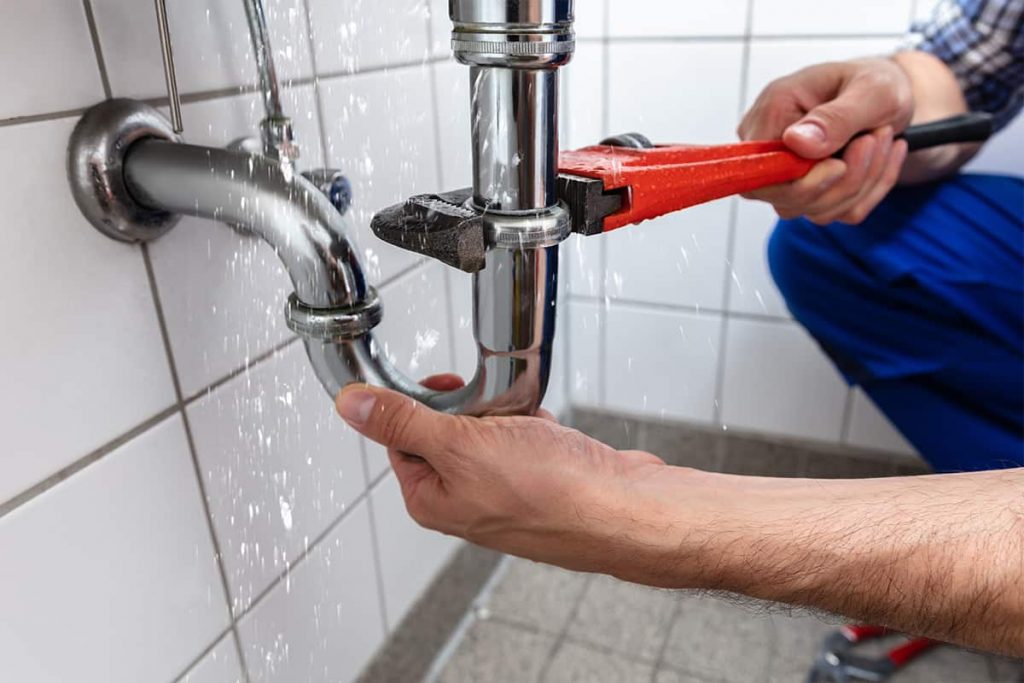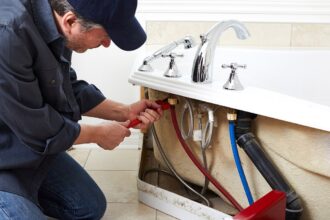Every homeowner encounters plumbing issues at some point, and while some problems require a professional’s touch, many common plumbing issues have quick and easy solutions you can tackle yourself. With a little know-how and the right tools, you can save time, money, and a lot of frustration. Here are simple fixes for some of the most common plumbing problems around the house.
1. Dripping Faucets
A dripping faucet isn’t just annoying—it can waste hundreds of gallons of water a year. The cause is often a worn-out washer or O-ring inside the faucet handle.
Fix:
First, shut off the water supply under the sink. Then, remove the faucet handle and use a wrench to loosen the packing nut. Inside, you’ll find the washer or O-ring. Replace it with a new one (available at any hardware store), reassemble the faucet, and turn the water back on. That steady drip should be gone.
2. Clogged Drains
Whether it’s a slow-draining sink or a shower that fills up like a tub, clogs are a common frustration. Most are caused by buildup of hair, soap scum, or grease.
Fix:
Start with a plunger. If that doesn’t work, try a drain snake to manually remove the clog. You can also use a natural solution of baking soda and vinegar: pour half a cup of baking soda down the drain, followed by a cup of vinegar. Let it fizz for 15 minutes, then flush with hot water. Avoid using harsh chemical drain cleaners regularly, as they can damage your pipes over time.
3. Running Toilets
A toilet that runs constantly can waste a lot of water and increase your utility bill. The usual culprit is a faulty flapper, which doesn’t seal the tank properly.
Fix:
Open the toilet tank and check the flapper at the bottom. If it’s warped or dirty, it won’t seal properly. Flappers are inexpensive and easy to replace—just unhook the old one and snap a new one into place. You might also need to adjust the chain length or check the fill valve for wear.
4. Low Water Pressure
If your shower has gone from a satisfying spray to a weak trickle, you might be dealing with low water pressure. Often, the issue lies in the faucet aerator or showerhead.
Fix:
Unscrew the aerator or showerhead and soak it in vinegar overnight to dissolve mineral buildup. If that doesn’t work, it might be time to replace it. For whole-house pressure problems, check your home’s pressure regulator or contact your local water provider to see if there’s an issue on their end.
5. Leaky Pipes
Leaks under the sink or behind appliances can cause water damage and mold growth if left unchecked. Many leaks are due to loose joints or worn-out seals.
Fix:
Turn off the water supply and inspect the leaking joint. Tightening the connection with a wrench may solve the problem. If the leak persists, you might need to replace the joint or pipe. Use plumber’s tape (Teflon tape) on threaded connections to ensure a watertight seal.
6. Garbage Disposal Jams
A jammed garbage disposal can bring kitchen cleanup to a halt. The motor may hum but not spin, or it might not respond at all.
Fix:
First, turn off the power at the circuit breaker for safety. Use a hex key (usually ¼ inch) to manually turn the motor from underneath the unit—most disposals have a port for this purpose. You can also press the red reset button on the bottom of the unit. Never stick your hand into the disposal from above!
7. Water Heater Troubles
If you’re getting lukewarm water—or none at all—it could be a simple issue like a tripped breaker or pilot light that’s gone out.
Fix:
For electric heaters, check the circuit breaker and thermostat settings. For gas heaters, relight the pilot light following the manufacturer’s instructions. If you notice water pooling around the base, however, you may have a leak in the tank, which often requires professional replacement.
When to Call a Pro
While many plumbing issues are DIY-friendly, some problems are best left to the pros. If you’re dealing with sewage backups, major leaks, water damage, or recurring clogs, it’s time to call in a licensed plumber. They have the tools and experience to diagnose and fix more complex issues without risking further damage.
Conclusion
You don’t need to be a professional to handle many of the plumbing problems that crop up in day-to-day life. With a few tools, some patience, and a little confidence, you can tackle everything from leaky faucets to clogged drains. Knowing how to perform these simple fixes not only saves money but also empowers you to keep your home running smoothly. After all, pipe dreams aren’t just fantasies—they’re totally doable with a little DIY spirit.




